augustus 29th, 2009
Christo and Jeanne-Claude
Surrounded Islands, Biscayne Bay, Greater Miami, Florida, 1980-83
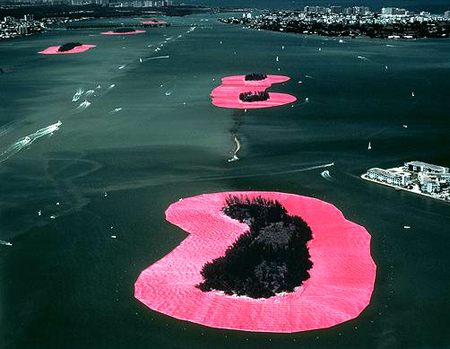
On May 7, 1983 the installation of Surrounded Islands was completed. In Biscayne Bay, between the city of Miami, North Miami, the Village of Miami Shores and Miami Beach, 11 of the islands situated in the area of Bakers Haulover Cut, Broad Causeway, 79th Street Causeway, Julia Tuttle Causeway, and Venetian Causeway were surrounded with 585,000 square meters (6.5 million square feet) of pink woven polypropylene fabric covering the surface of the water, floating and extending out 61 meters (200 feet) from each island into the Bay. The fabric was sewn into 79 patterns to follow the contours of the 11 islands.
For 2 weeks Surrounded Islands spreading over 11.3 kilometers (7 miles) was seen, approached and enjoyed by the public, from the causeways, the land, the water and the air. The luminous pink color of the shiny fabric was in harmony with the tropical vegetation of the uninhabited verdant island, the light of the Miami sky and the colors of the shallow waters of Biscayne Bay.
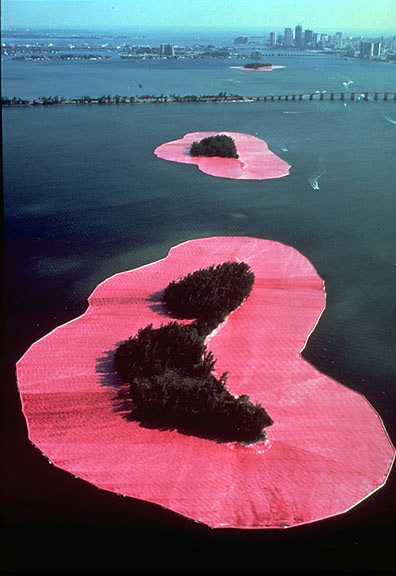
Photo: Wolfgang Volz ©1983 Christo
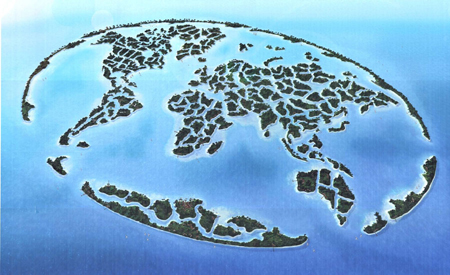
The World is a man-made archipelago of 300 islands constructed in the rough shape of a map of the landmasses of the Earth, located 4 kilometres off the coast of Dubai, United Arab Emirates.
Posted in Geomorphology, Visual Arts | Reacties uitgeschakeld voor Inland Islands
augustus 28th, 2009
Panamarenko
Hofkes, 1967

Three thick sheets of cardboard of about 1m2 are filled with a variety of inorganic trash and debris. From a prophetic kind of future vision Panamarenko nostalgically tries to restore and reconstruct the long lost city-gardens. These city-gardens functioned as urban alternative for life on the countryside and provided additional food for the unfortunate. By the steady increase of city residents (in 2008 a remarkable event took place: the majority of the world population lives now in a city) the necessity to have physical contact with the earth and live from the land is gone. People are used to this new, self-created landscape and recognize the urban environment as their natural habitat.
Posted in Ecology, Geomorphology, Sociology, Visual Arts | Reacties uitgeschakeld voor Industrial Gardening
augustus 25th, 2009
Francis Alys (in collaboration with Rafael Ortega and Cuauhtémoc Medina)
When faith moves mountains, 2002
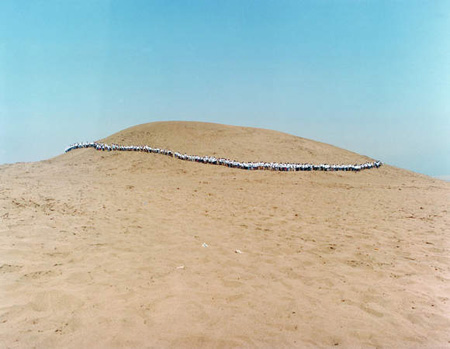
On April 11th 2002, 500 voluntiers were called in order to form a line to move a sand dune situated in the surroundings of the city of Lima. This human comb progressed pushing forward a certain quantity of sand with shovels in order to move the dune from its original position. The actual displacement was of an infinitesimal proportion, but not its metaphorical resonance.
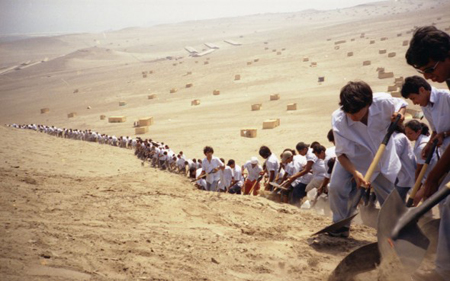
Maasvlakte 2, Rotterdam, NL (2008 – 2033)
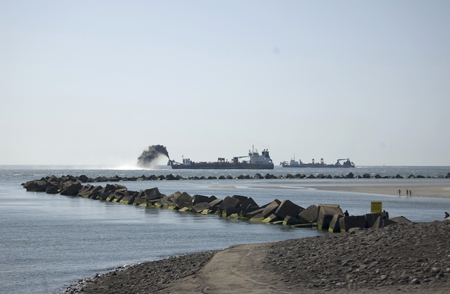
© Michiel van Raaij
New land is being created to extend the port of Rotterdam in The Netherlands. After an international call for tenders the contracting consortium PUMA (Project Uitbreiding Maasvlakte) was contracted to build the first sites. PUMA is a consortium consisting of Koninklijke Boskalis Westminster NV and Van Oord NV, notoriously known for The Palm Islands and The World in Dubia, and will deliver the first sites for the first customers in 2013.
The vital statistics of Maasvlakte 2 provide a picture of the scale of the project. The site will cover a total area of around 2,000 hectares, half of which will be for industrial sites. Division between the main areas of activities includes 630 hectares for container storage and throughput (with a total container handling capacity of 17 million teu annually), 190 hectares for the chemicals industries and 180 hectares for distribution. The infrastructure includes 13 km of roads, 14 km of rail lines and 13 km of quay walls. The construction of the ‘new land’ will require a total of 365m m³ of sand over the whole project period (up to 2033), 240m m³ of which will be for the first phase of construction due to be completed in 2013. There will be 10.8 km of sea defences and the access channel for shipping will be 10 nautical miles long with a depth of up to 20m, a 600m wide port entrance and 700m wide turning basin. The sky is the limit…
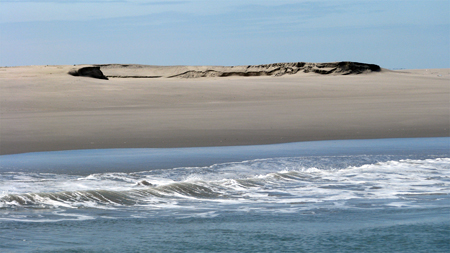
Virgin Island, 2009
© Marjolijn Dijkman
Posted in Geomorphology, Visual Arts | Reacties uitgeschakeld voor When Faith Moves Mountains
augustus 23rd, 2009
Persijn Broersen & Margit Lukács
Manifest Destiny, 2009
Serie of silkscreens, 120 x80 cm.
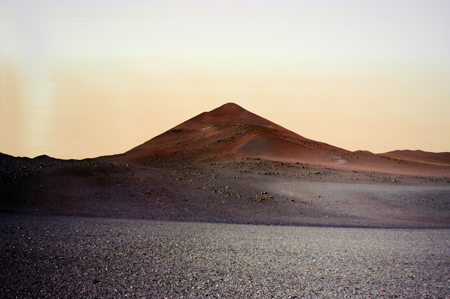
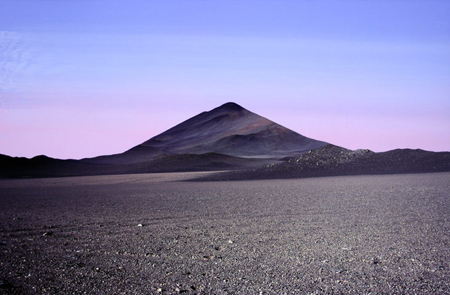
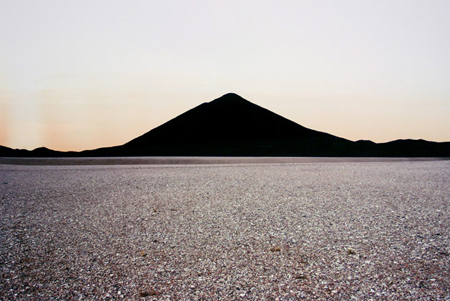
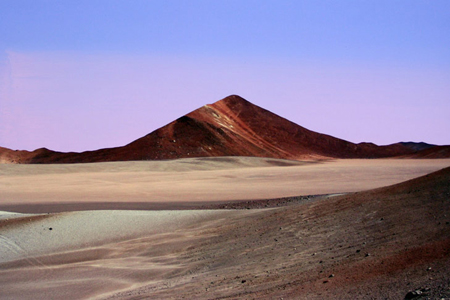
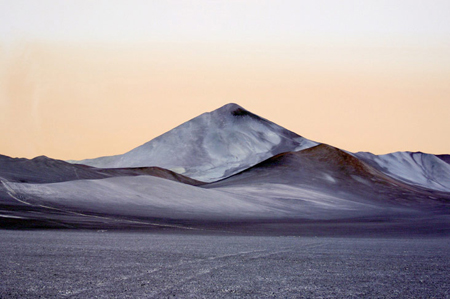
In the silk-screens one sees an imaginary sky that is silkscreened over photographs of a barren desert where some of the Mars mobiles have been tested. In these works Broersen & Lukacs investigate the notion close up and distance, of horizon and the frontier, in relationship to the American tradition of the sublime landscape.
James Turell
Roden Crater, 1979 – 2011

Roden Crater is an extinct volcano crater northeast of Flagstaff, Arizona. Artist James Turrell purchased the 400,000 year old, 3 km wide crater in 1979 and has been transforming it into a massive naked-eye observatory, designed specifically for the viewing of celestial phenomena. He stated that he plans to open the crater for public viewing in 2011.
TIMES-ONLINE: Man-made volcanoes may cool Earth
August 30, 2009
THE Royal Society is backing research into simulated volcanic eruptions, spraying millions of tons of dust into the air, in an attempt to stave off climate change. The intervention by the Royal Society comes amid tension ahead of the United Nations-sponsored climate talks in Copenhagen in December 2009 to agree global cuts in carbon dioxide emissions. Preliminary discussions have gone so badly that many scientists believe geo-engineering will be needed as a “plan B”.
The interest in so-called aerosols is linked to the eruption of Mount Pinatubo in the Philippines in 1991, the second largest volcanic eruption of the 20th century. The explosion blasted up to 20m tons of tiny sulphur particles into the air, cooling the planet by about 0.5C before they fell back to earth. The Royal Society is Britain’s premier science institution and its decision to take geo-engineering seriously is a measure of the desperation felt by scientists about climate change.
Based on a text by Jonathan Leake, Environment Editor of The Times.
Posted in Geomorphology, Visual Arts | Reacties uitgeschakeld voor The Possibility of a Mountain
augustus 22nd, 2009
Leo Fabrizio
Swiss Bunkers, 1999-2004
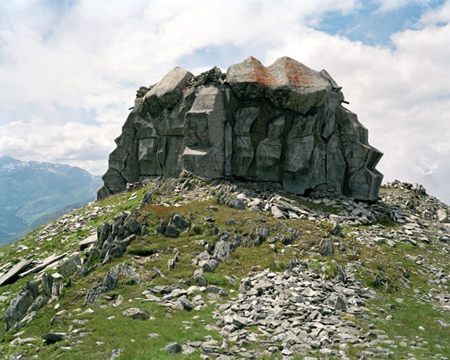
Switzerland is riddled with hidden and disguised military installations. What appeared to be a rock face in a lay-by beside the road were actually steel and concrete doors painted like rock. A five years study by, questioning landscape and identity. Is the territory surrounding us influencing our identity? What happens then when this territory, reputed to be wild and pure, is in fact completely manipulated by humans?
‘After the cold war ended many of the bunkers became obsolete. The tendency is to forget them or even to renounce them, my approach on the contrary, aims to expose them from a new angle. This approach has led me to discover a great number of bunkers, some in remote areas, sometimes difficultly accessible, covering the whole of the Swiss territory. The relations between these basic shaped bunkers and the often-sumptuous landscape surrounds them became an essential part of the study. I looked for the most spectacular bunkers, notable for their camouflage devices, true theatre scenery made with the utmost care. A quality indeed fully Swiss.’ – Leo Fabrizio –
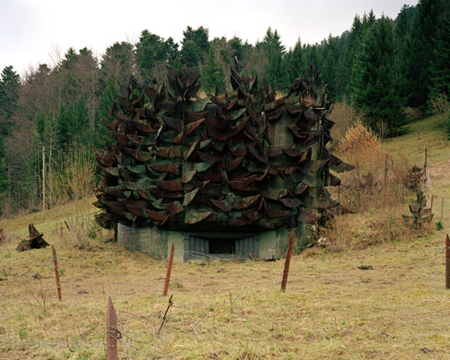
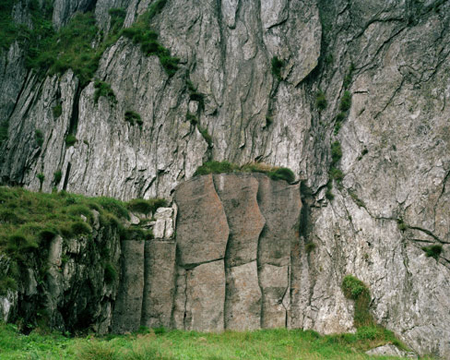
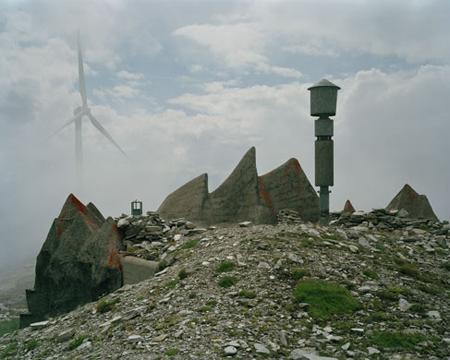
Posted in Geomorphology, Sociology | Reacties uitgeschakeld voor Neutral Bunkers
augustus 22nd, 2009
Peter Fend
Ocean Earth Construction and Development Corporation, 1980
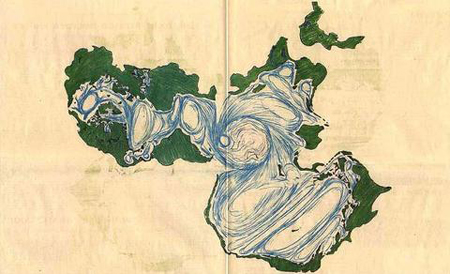
The aim of the Ocean Earth Construction and Development Corporation is research on alternative energy sources. They use satellite imaging to monitor and analyze global ecological and geopolitical hot-spots, largely for media clients. Considering the world a living earthwork, ecological aspects are linked to and interconnected with artistic aspects. Ocean Earth was conceived as an instrument for implementing the goals of the environmental art movement, directly building upon the ideas of artists such as Joseph Beuys, Robert Smithson and Gordon Matta-Clark. Through inter-disciplinary collaborations and by connecting ecological imperatives with experimental new technologies, Fend asks ‘How far can art go?’, in drawing attention to a belief that artistic research can generate productive dialogue about global ecological problems and that it can be used to develop effective solutions.
Local Fuel Production – Afganistan Iran Holland, 2009
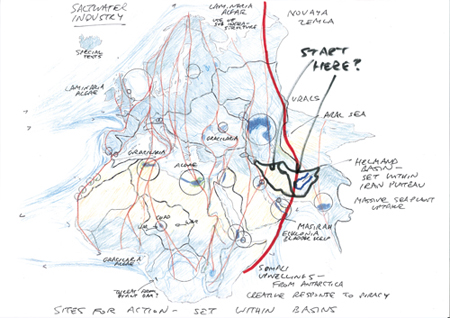
Maquette of Afganistan basin as skatepark
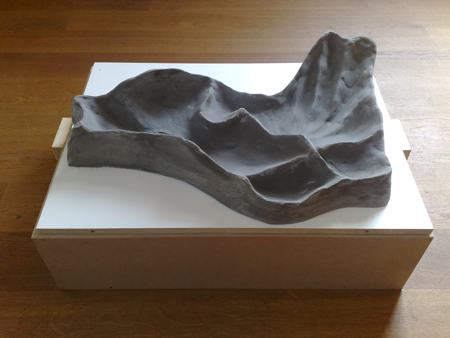

Posted in Ecology, Geomorphology, Visual Arts | 2 Comments »
mei 12th, 2008
Robert Smitson
Asphalt Rundown, 1969
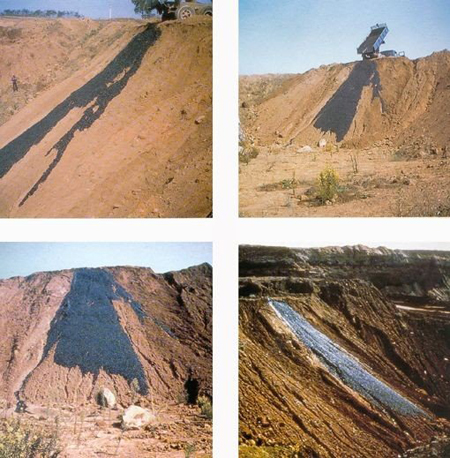
Smithson’s interest in the second law of thermodynamics completely dominated his life and work. Much of his art is associated with the concept of entropy: the law that states that molecular disorder can only increase, and as such the universe will eventually run down (a law that has since been discredited). In this piece, liquid asphalt slides from the dump truck and runs down an eroded hill in a quarry near Rome, Italy forming an abstract expressionist canvas. However, the work cannot only be considered aesthetically –we’re forced to consider the ecology (What is the damage being done? Who will clean this up? How will the earth recover?). By performing an act with the weapon of urban sprawl–asphalt–we are forced to look at the effects of industrialization on the landscape under a hard light. – D. Scott Hessels –
Robert Smitson died in a plane crash while photographing a work in Texas, called Amarillo Ramp (1973), consisting of a 140 foot diameter partial circle of rock, which rises out of the level ground to a height of around 15 feet. The artificial lake in which the piece once emerged is now dry, and the sculpture is slowly eroding.
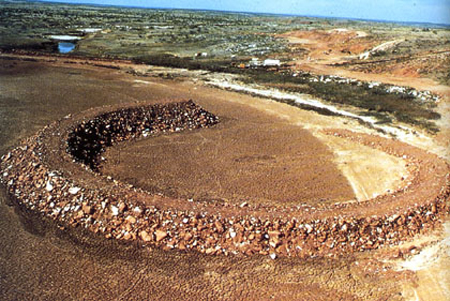
Posted in Ecology, Geomorphology, Visual Arts | Reacties uitgeschakeld voor Asphalt Aftermath























